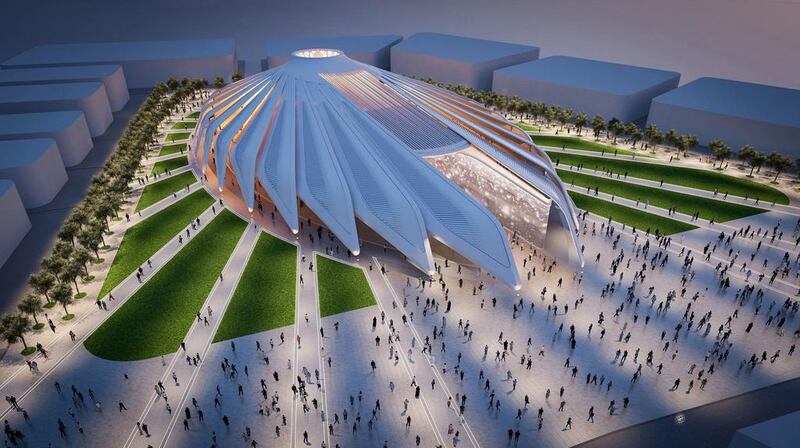Detailed designs for the Expo 2020 site are being finalised as the project moves ahead to what is expected to be a busy construction phase, according to a senior official.
Najeeb Al Ali, the executive director of Dubai’s Expo 2020 Bureau, said that more than 4.7 million cubic metres of sand had already been shifted on the plot and that many of the Expo 2020 project staff have already moved to offices on the site.
Speaking on Thursday at the Inter Business Council Infrastructure Forum held jointly by six overseas business councils, Mr Al Ali said: “It’s a big project and we don’t have that many days, or years, left. Time passes quickly.”
He said: “The master plan is already set. The construction is going to start this year and is going to intensify in 2018, and finalise towards the end of 2019.”
Tenders have been issued for several aspects of Dubai’s Expo 2020 site in recent weeks, including the construction of the 15,000 square metre UAE Pavilion designed by Spanish architect Santiago Calatrava.
Mr Al Ali said he expected Expo participants who want to build their own pavilions to be signed up by the second quarter of 2018.
“We always urge those countries who will be building their pavilion [to get involved] as early as possible because we know from our experience with other countries that it takes time. Even if your pavilion is just one pavilion it is always wise to come early.”
Speaking on a panel debate at the same event, Roberto Nassi, a general manager of engineering consultancy Metropolitana Milanese, which oversaw much of the work for Expo 2015 in Milan, said that getting countries on site as early as possible was key.
He said that even if the host nation has carried out all of its preparations on time, it can still find itself involved in last-minute rushes to accommodate countries that sign up late.
For example, he said that for the Expo 2015 “the UAE entered when it said it would, but the Netherlands signed a contract four months before the event starts”.
“And you have to manage it. Because you want to be as inclusive as the previous one.”
He said that about one-third of total expenditure on Expo projects goes on capital infrastructure by the host nation, another third goes on construction of pavilions by participating nations and the remainder goes on the operational costs during the six-month hosting period.
mfahy@thenational.ae
Follow The National's Business section on Twitter







